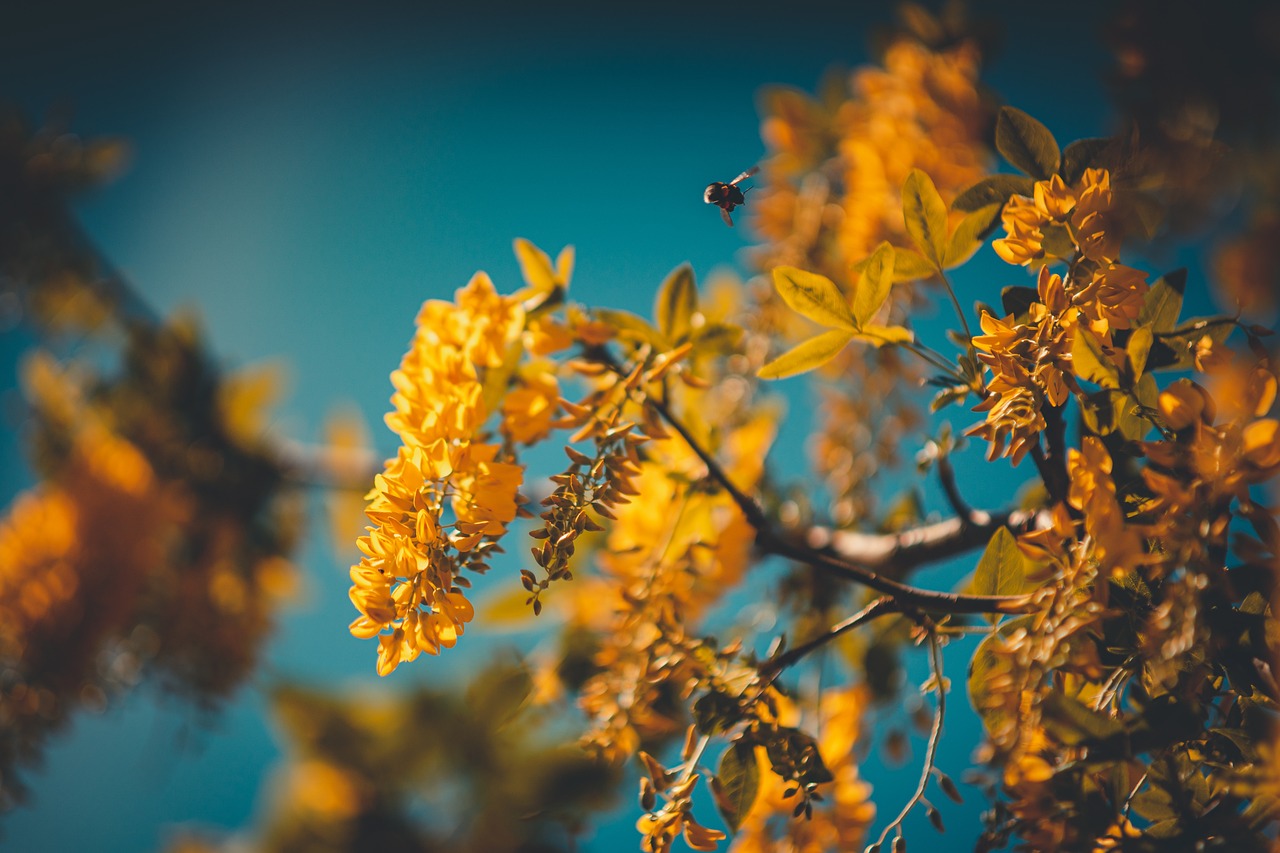Laburnums are a stunning ornamental flowering tree from central and southern Europe.
An important thing to note is that all parts of the plant are poisonous to humans and animals.
It is even recommended not to have them next to unlined ponds as the poison can harm any fish, frogs or newts living in the pond.
They produce fabulous trailing yellow flowers from May to June.
Some growers find however, that their Laburnum will not flower some years, despite looking healthy.
So if you have asked the question “Why Is My Laburnum Tree Not Flowering?” then read on for answers and solutions.
Natural Flowering Cycle
Laburnum trees are deciduous and drop their leaves in autumn.
They take around 15 years to reach maturity and don’t always flower in successive years.
Sometimes they can have a particularly impressive display one year, but can use up all their energy and need to recover the following year.
If this is the case they may produce only a few flowers the next year, or even none at all.
How to fix:
- This is normal and the tree should flower again in the subsequent year.
- Accept that you may have one great year, then the following may not be so impressive.
- Although Laburnums do not usually require extra food in the form of fertiliser, if your soil is quite poor you could provide some potash feed.
- Potash basically means potassium, which is good for flowering or fruiting plants.
- This should be supplied in the growing season as directed on the packet.
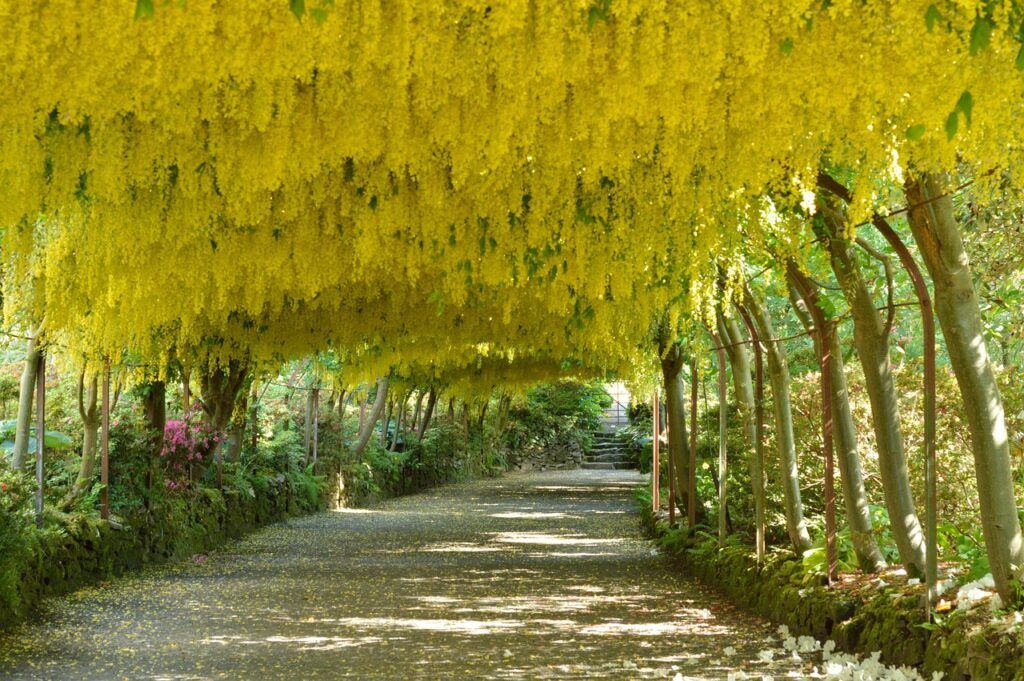
Not Enough Sun
Laburnum trees like full sun, which means unshaded sun for most of the day.
They will grow in partial shade, but you will find that they do not produce as many flowers.
How to fix:
- Plant any new Laburnums in a sunny spot.
- If you find that your existing Laburnum is in full or partial shade, try to decrease the amount of shade by pruning overhanging trees, or moving washing lines or sheds.
- If this is not possible and the Laburnum is still quite young and small, it may be possible to move it to a sunnier spot.
- Only move a Laburnum in autumn or winter, during it’s dormancy.
- Retain as much of the root ball as possible.
- Prepare the new hole in advance to minimise time out of the ground.
- If the Laburnum is a well-established tree then it is probably wise to leave it where it is.
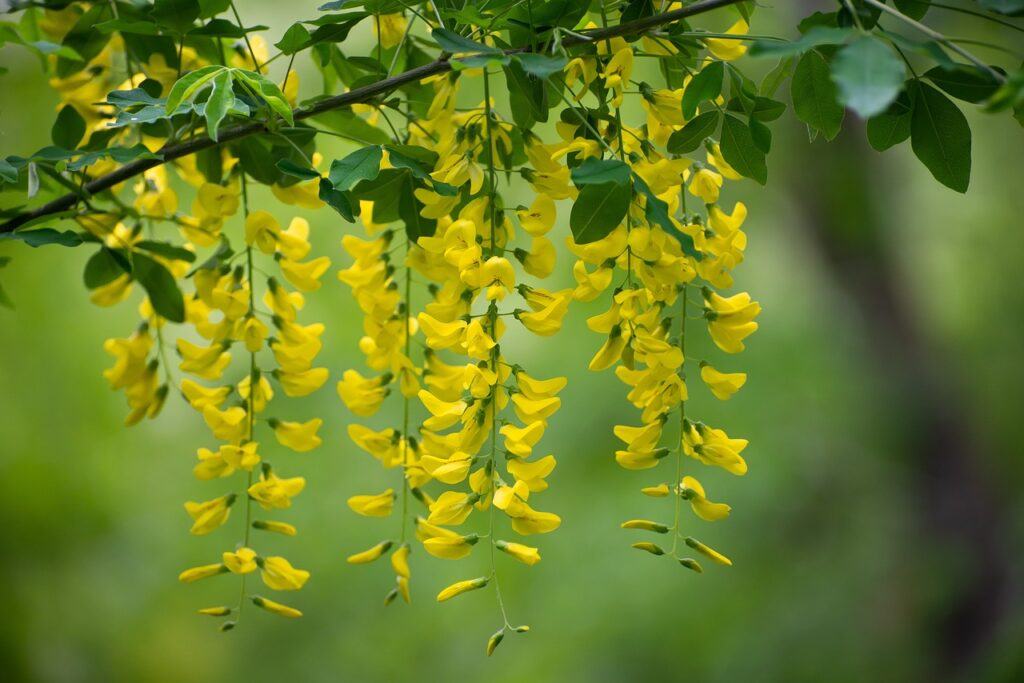
Soil With Poor Drainage
In nature, Laburnum trees grow on slopes and scrub land and love good drainage.
They do not like waterlogged soil and will not grow well in boggy conditions.
How to fix:
- If your soil is quite rich and prone to compacting, add in some sand or grit to improve drainage.
- If you notice rainwater accumulating around the base of the plant, try to redirect it by shaping some channels in the soil.
- You will not need to provide any extra water for your established Laburnum unless the weather is very hot and dry.
- Young or recently moved plants may need a little extra to help them get established.
- In these cases only water so the soil is moist, not saturated.
Too Much Fertiliser
Similarly, Laburnums do not need anything extra in the food department either, apart from a little Potash / Potassium as mentioned above, and only then to aid flowering.
Too much fertiliser will encourage foliage growth rather than flowers.
How to fix:
- There is no need to fertilise your Laburnum tree.
- Definitely do not use a nitrogen based fertiliser, as Laburnums actually add nitrogen to the soil and so have plenty.
- This is because they are part of the pea family.
- Legumes such as peas and beans fix nitrogen into the soil.
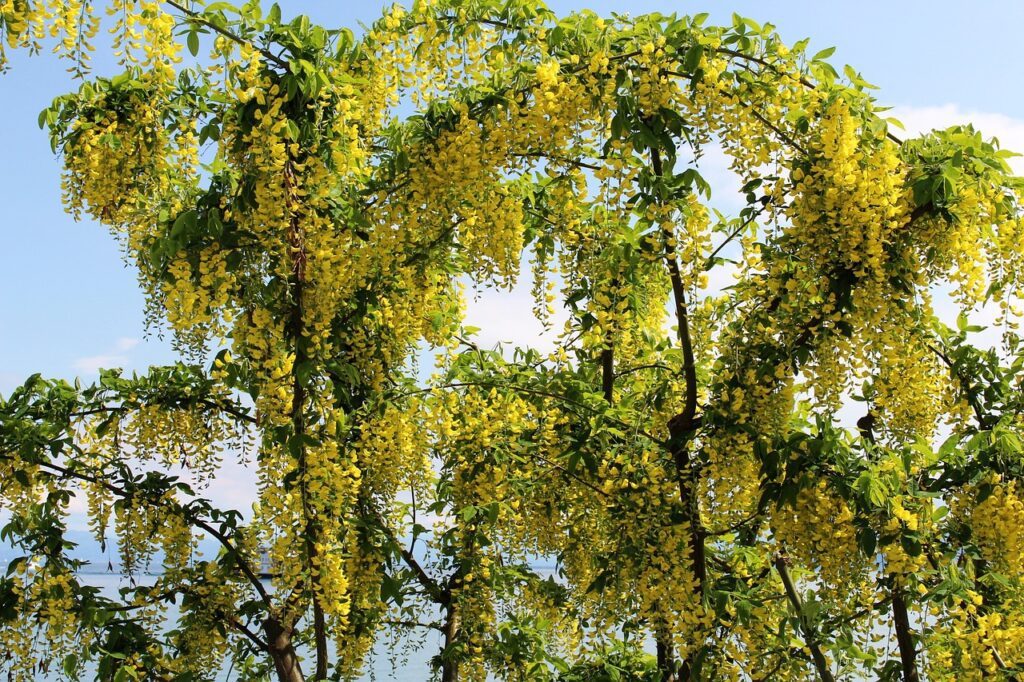
Fungus: Armillaria Root Rot “Honey Fungus”
This type of fungus can attack woody ornamental trees like Laburnums and Flowering Currants at the roots and trunk base.
It can often lead to the demise of the plant, and can spread to other plants through the soil.
There will be white fungal growth under the bark starting at ground level.
The bark then starts to crack and decompose.
There may be a strong mushroomy odour.
This is sometimes accompanied by the appearance of honey coloured mushrooms around the base of the plant in the autumn.
How to fix:
- There is no cure for Honey Fungus, so infected plants should be carefully removed and disposed of (not in the compost heap).
- Make sure to sterilise any garden tools or gloves used afterwards, and wash your hands before touching other plants.
- The surrounding soil should be tilled to disrupt the rhizomorphs (the underground fungal structures or “bootlaces”).
- You could bury plastic liner in the soil around infected areas to prevent the spread to other plants.
- Prevention is better than a cure so promote plant health and natural resilience.
- Maintain good ventilation around the base of your plants.
- Plant Laburnums and other woody ornamentals in sunny positions as this encourages drier conditions.
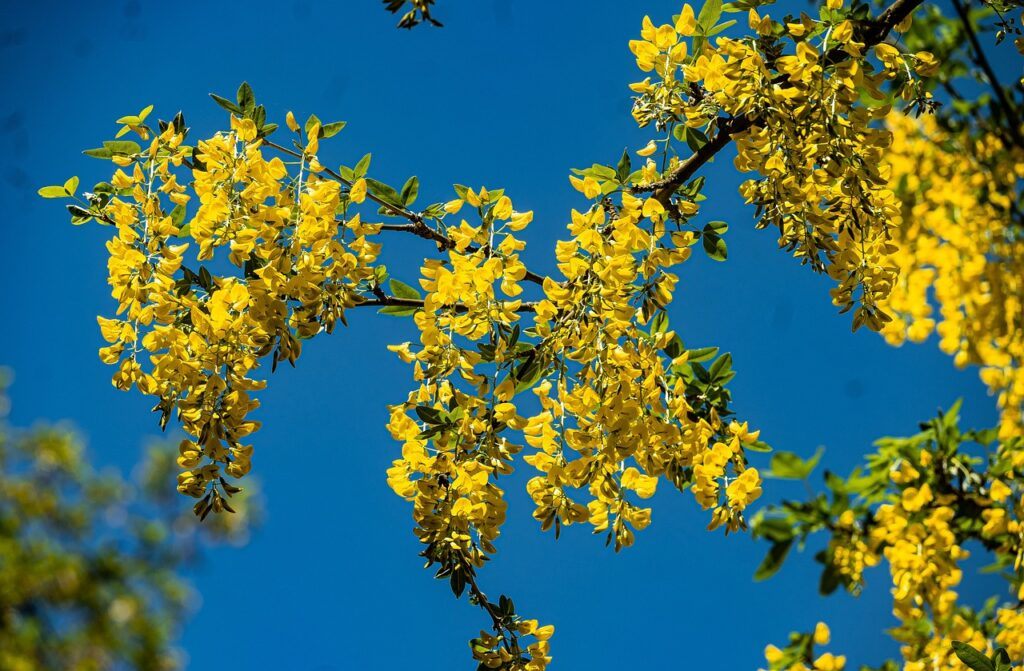
Natural Lifespan
Laburnum trees live for approximately 30 to 40 years and once they reach this point they will begin to decline.
Flower and foliage production will be less and the tree will become more woody.
Older Laburnums may become more susceptible to fungal infections.
How to fix:
- The natural lifespan will bring the tree to an end however Laburnum trees can be easily grown from the seeds that they produce.
- If you have an old tree you may find seedlings already growing in the ground where they have fallen around the tree.
- If not you can harvest the seeds in September and plant them in pots.
- Keep them in a sheltered greenhouse over the winter as they will not survive a frost as a seedling.
- They will grow fairly slowly to begin with, and will be ready for the ground after about two years.
- Plant them in their final position in the spring, after all frost has passed.
Final Thoughts
Laburnums are one of the prettiest ornamental trees and are suitable for smaller gardens, as their final height is around eight metres.
Once established they are very hardy, and really only struggle in waterlogged ground.
It is normal for them to flower well one year, and then not so well the year after.
If you are having any issues with your Laburnum that have not been covered above, then please drop me a message and I will do my best to help.

